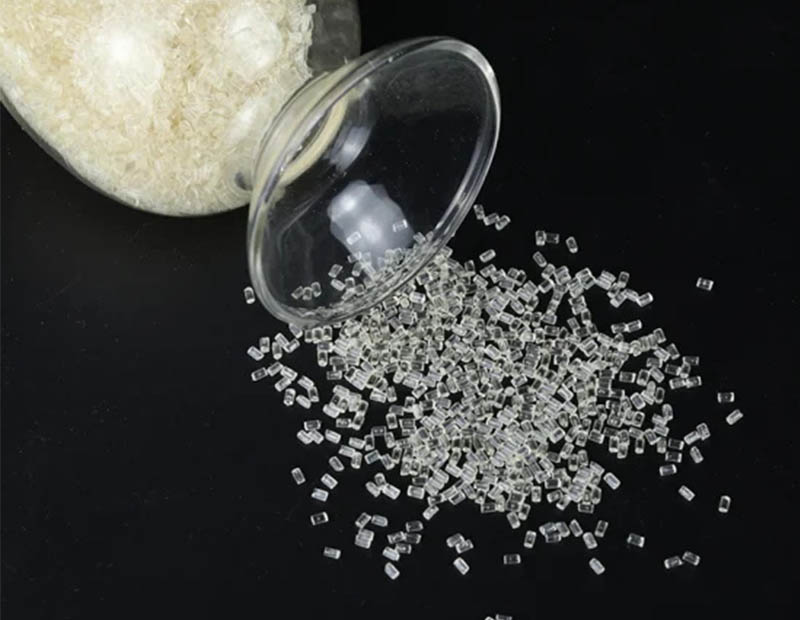Comprehensive Guide to PSU Material: Properties, Applications, and Maintenance
What is PSU Material?
Polysulfone (PSU) is a High-performance thermoplastic polymer belonging to the family of sulfone plastics. Characterized by its amber transparency and exceptional thermal stability, PSU exhibits a unique combination of properties that make it suitable for demanding engineering applications. The material's molecular structure contains aromatic rings linked by sulfone groups (−SO2−), which contribute to its remarkable performance characteristics.
Key Chemical Structure: The repeating unit of PSU is −[C6H4−C(CH3)2−C6H4−O−C6H4−SO2−C6H4−O−]n−, where the biphenyl and isopropylidene groups provide dimensional stability while the sulfone group enables high-temperature resistance.

Technical Characteristics of PSU
1. Thermal Properties
PSU demonstrates outstanding heat resistance with a glass transition temperature (Tg) of 185°C and can withstand continuous service temperatures up to 150°C. Its heat deflection temperature (HDT) at 1.82 MPa reaches 174°C, significantly higher than standard engineering plastics like ABS or polycarbonate. The material maintains dimensional stability across a wide temperature range (-100°C to +150°C) with a linear coefficient of thermal expansion of 5.1×10-5 cm/cm/°C.
2. Mechanical Performance
With a tensile strength of 70-75 MPa and flexural modulus of 2.5-2.7 GPa, PSU offers excellent load-bearing capacity. The material exhibits 50-100% elongation at break, demonstrating good toughness despite its rigidity. Its Rockwell M hardness typically ranges between 69-75, providing excellent wear resistance.
3. Chemical Resistance
PSU shows remarkable resistance to mineral acids, alkalis, and salt solutions, maintaining integrity in pH 2-13 environments. It withstands exposure to hydrocarbons, alcohols, and many cleaning agents, though it is susceptible to ketones and chlorinated solvents. The material achieves a UL94 V-0 flammability rating at thicknesses above 1.5 mm without requiring flame retardant additives.
4. Electrical Properties
As an excellent electrical insulator, PSU maintains a volume resistivity >1016 Ω·cm and dielectric strength of 15-17 kV/mm. Its dielectric constant remains stable at 3.0-3.1 across frequencies from 60 Hz to 1 MHz, with a dissipation factor below 0.0015 at high frequencies.
5. Optical Characteristics
Natural PSU exhibits 75-80% light transmission with a slight amber tint, and a refractive index of 1.633. The material's haze value typically measures <3%, making it suitable for transparent applications requiring thermal stability.
Primary Application Scenarios
Medical and Healthcare
PSU's autoclavability at 134°C makes it ideal for reusable surgical instruments, sterilization trays, and dental equipment components. The material meets ISO 10993 and USP Class VI biocompatibility standards for prolonged tissue contact.
Aerospace and Transportation
In aircraft interiors, PSU is used for cabin components requiring FAR 25.853 compliance for flammability. Automotive applications include under-hood sensors and electrical connectors that must withstand 125°C continuous exposure.
Food Processing Equipment
PSU's FDA 21 CFR 177.1655 compliance allows its use in food contact applications like coffee makers, milk pumps, and filtration housings. The material withstands repeated steam cleaning cycles at 100°C+ temperatures.
Electrical and Electronics
PSU serves as an alternative to ceramic in circuit breakers, relay housings, and high-temperature connectors due to its CTI >200 V (Comparative Tracking Index). Its stable dielectric properties make it suitable for 5G antenna components.
Water Treatment
PSU membranes with 0.01-0.1 μm pore sizes are extensively used in ultrafiltration systems, demonstrating >99.9% bacterial rejection rates while maintaining flux rates of 50-100 LMH (liters per square meter per hour).
Comprehensive Maintenance Guidelines
Cleaning Procedures
Mechanical Cleaning: Use soft cloths or sponges with mild detergent solutions (pH 6-8). Avoid abrasive pads that may cause surface scratches exceeding Ra 0.8 μm roughness.
Chemical Cleaning: Isopropyl alcohol (70% concentration) is effective for disinfection. For stubborn deposits, use 3% hydrogen peroxide solutions at temperatures below 60°C.
Sterilization: PSU withstands 1000+ cycles of steam autoclaving at 121°C, 15 psi. For gamma sterilization, limit dose to <50 kGy to prevent yellowing.
Storage Conditions
Maintain storage temperatures between 15-30°C with relative humidity below 60% RH to prevent moisture absorption exceeding 0.3% by weight.
For critical applications, pre-dry PSU components at 120°C for 4 hours before use if exposed to humid environments (>60% RH) for extended periods.
Protect from UV exposure by storing in opaque containers or using UV-stabilized grades when outdoor use is anticipated.
Operational Considerations
In continuous high-temperature applications (>120°C), conduct quarterly inspections for signs of stress cracking or dimensional changes exceeding 0.5%.
For moving parts, apply silicone-based lubricants with viscosity 50-100 cSt at service temperature to reduce wear.
When joining PSU components, use adhesives with Tg >100°C such as epoxy or cyanoacrylate formulations specifically designed for high-temperature plastics.
Reconditioning Techniques
Surface scratches can be polished using progressively finer abrasives up to 6000 grit, followed by buffing with diamond paste (1 μm grade).
For discolored components, oxidative bleaching with 10% hydrogen peroxide at 60°C for 2 hours can restore optical clarity.
Stress-relief annealing at 160°C for 1 hour per mm of thickness (followed by slow cooling at 2°C/min) can restore dimensional stability to warped parts.






